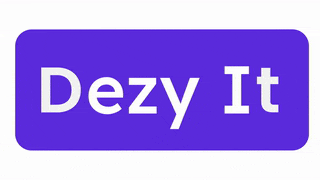The Rising Burden of Administrative Work in Hospitals: Challenges and Solutions
- purvasha
- Dec 4, 2024
- 2 min read
Administrative work in hospitals has increased significantly, creating operational challenges that impact financial performance, patient care, and workforce well-being. For clinic owners, managers, and investors, understanding the drivers of this surge and implementing innovative solutions is critical for ensuring sustainable operations and high-quality care.

1. Factors Driving the Rise in Administrative Work
a. Regulatory Requirements
Hospitals face growing compliance demands, including adherence to new privacy laws, billing regulations, and quality reporting standards. These requirements have increased documentation workloads, necessitating additional administrative staff.
b. Workforce Shortages
A shortage of healthcare workers, particularly in administrative and support roles, has placed additional burdens on existing staff. This has led to higher costs for recruiting and retaining skilled workers while increasing burnout among employees.
c. Technological Complexity
While digital systems like Electronic Health Records (EHRs) aim to streamline workflows, their integration often adds layers of complexity. Managing these technologies requires specialized staff and constant updates, further straining resources.
d. Rising Patient Volumes
An aging population and increased prevalence of chronic diseases have led to more patients seeking care. This growth has amplified administrative tasks such as scheduling, billing, and managing patient communications.
2. The Impact of Administrative Burdens
a. Financial Strain
Administrative costs have risen faster than hospital revenues. For instance, U.S. healthcare administrative roles are projected to grow by 32% through 2029, creating significant budget pressures.
b. Patient Care Disruption
Time spent on administrative tasks reduces direct patient interaction, leading to lower satisfaction and potential care delays.
c. Staff Burnout
High administrative workloads contribute to burnout, increasing turnover rates and reducing overall productivity.
3. Innovative Solutions to Reduce Administrative Workload
a. Leveraging Conversational AI
AI-powered tools can automate repetitive tasks such as appointment scheduling, billing inquiries, and data entry. These systems also assist with patient communication, ensuring accurate and timely responses while reducing human workload.
b. Virtual Back Offices
Hospitals are increasingly outsourcing administrative tasks to virtual teams. These teams handle documentation, insurance claims, and coding, allowing in-house staff to focus on patient care while cutting costs.
c. Enhanced Interoperability
Streamlining data sharing across systems reduces duplication and simplifies workflows. Interoperable EHRs and patient management tools enable smoother communication between departments, improving efficiency.
d. Workforce Development
Investing in training programs ensures that administrative staff are equipped to manage evolving technologies and workflows. Additionally, fostering a positive work environment helps retain skilled employees.
Conclusion
The rise in administrative work presents significant challenges, but it also offers opportunities for innovation. By adopting solutions like AI, virtual staffing, and improved system integration, hospitals can streamline operations, reduce costs, and enhance patient care. For clinic owners, managers, and investors, these strategies are essential to staying competitive in an evolving healthcare landscape.
Learn more at:

